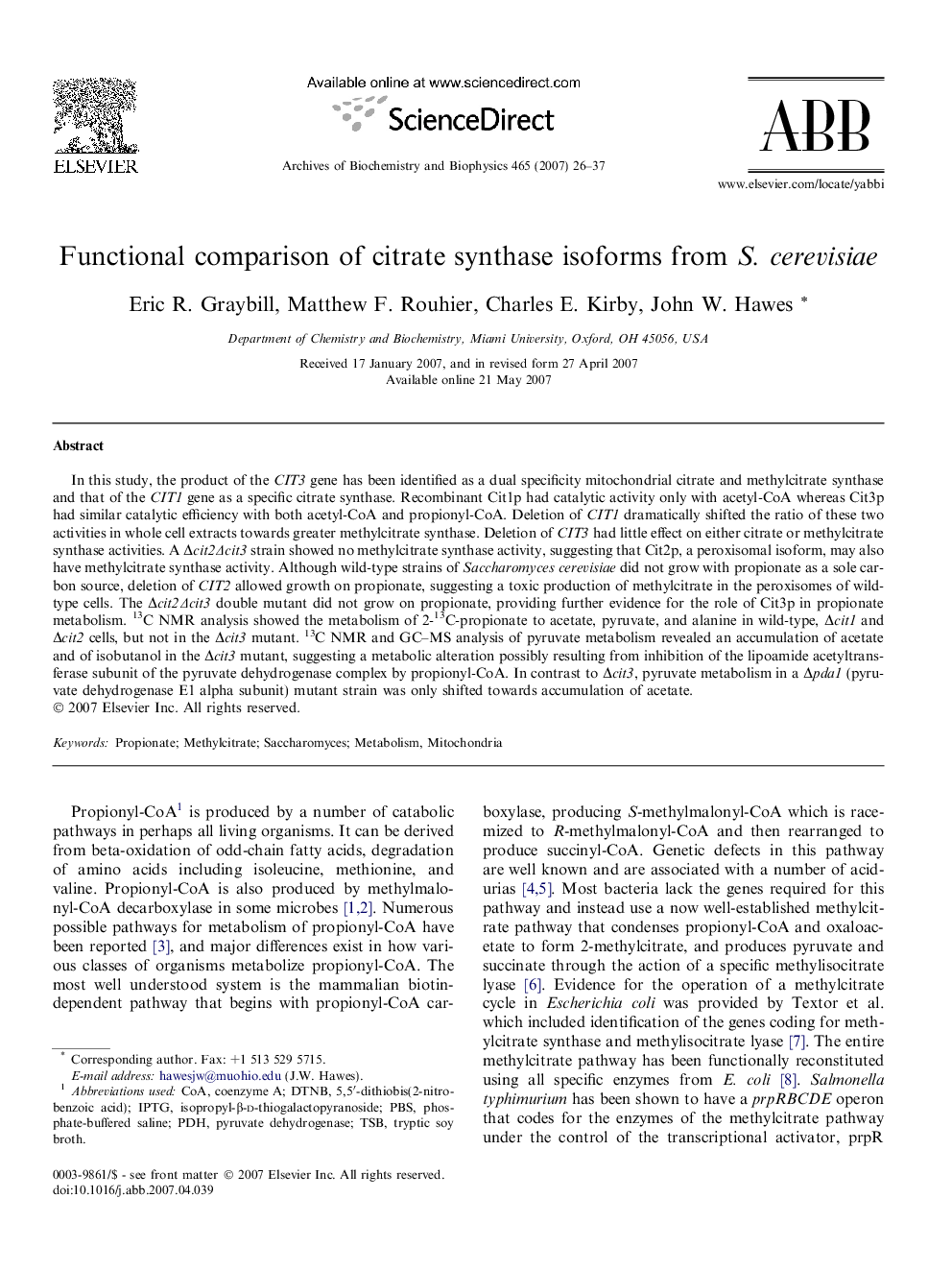| Article ID | Journal | Published Year | Pages | File Type |
|---|---|---|---|---|
| 1927036 | Archives of Biochemistry and Biophysics | 2007 | 12 Pages |
In this study, the product of the CIT3 gene has been identified as a dual specificity mitochondrial citrate and methylcitrate synthase and that of the CIT1 gene as a specific citrate synthase. Recombinant Cit1p had catalytic activity only with acetyl-CoA whereas Cit3p had similar catalytic efficiency with both acetyl-CoA and propionyl-CoA. Deletion of CIT1 dramatically shifted the ratio of these two activities in whole cell extracts towards greater methylcitrate synthase. Deletion of CIT3 had little effect on either citrate or methylcitrate synthase activities. A Δcit2Δcit3 strain showed no methylcitrate synthase activity, suggesting that Cit2p, a peroxisomal isoform, may also have methylcitrate synthase activity. Although wild-type strains of Saccharomyces cerevisiae did not grow with propionate as a sole carbon source, deletion of CIT2 allowed growth on propionate, suggesting a toxic production of methylcitrate in the peroxisomes of wild-type cells. The Δcit2Δcit3 double mutant did not grow on propionate, providing further evidence for the role of Cit3p in propionate metabolism. 13C NMR analysis showed the metabolism of 2-13C-propionate to acetate, pyruvate, and alanine in wild-type, Δcit1 and Δcit2 cells, but not in the Δcit3 mutant. 13C NMR and GC–MS analysis of pyruvate metabolism revealed an accumulation of acetate and of isobutanol in the Δcit3 mutant, suggesting a metabolic alteration possibly resulting from inhibition of the lipoamide acetyltransferase subunit of the pyruvate dehydrogenase complex by propionyl-CoA. In contrast to Δcit3, pyruvate metabolism in a Δpda1 (pyruvate dehydrogenase E1 alpha subunit) mutant strain was only shifted towards accumulation of acetate.
